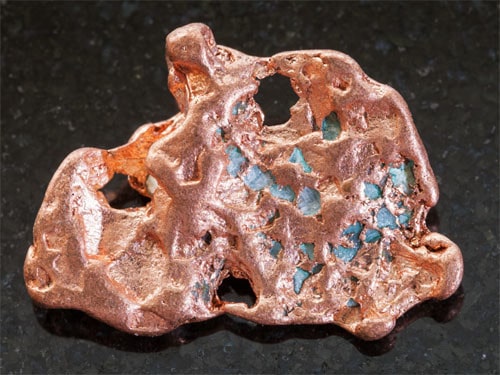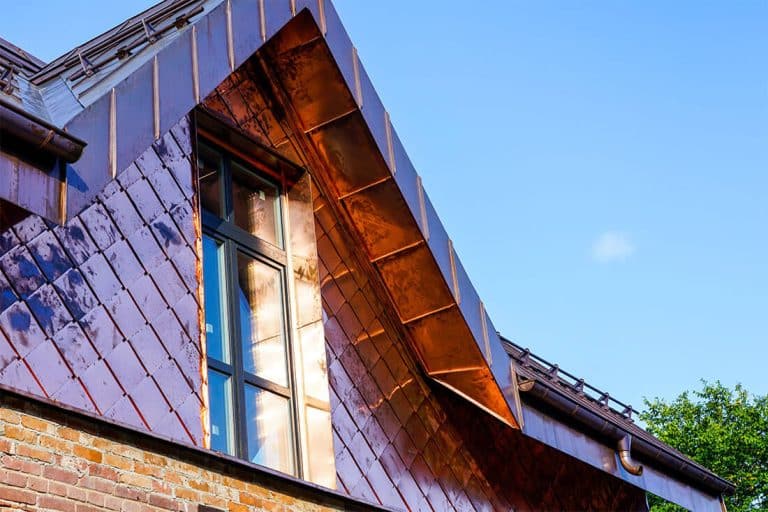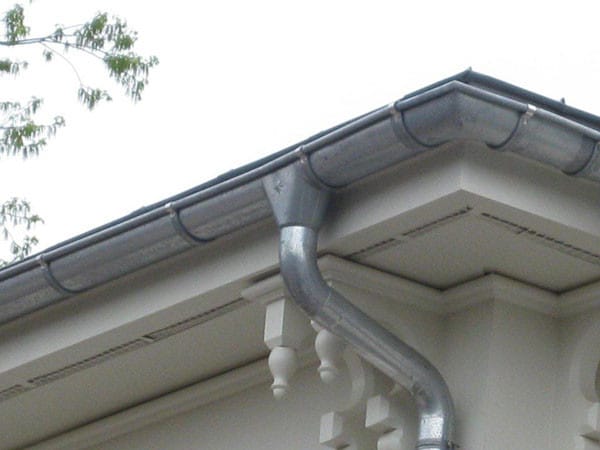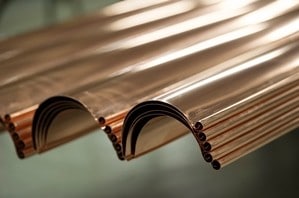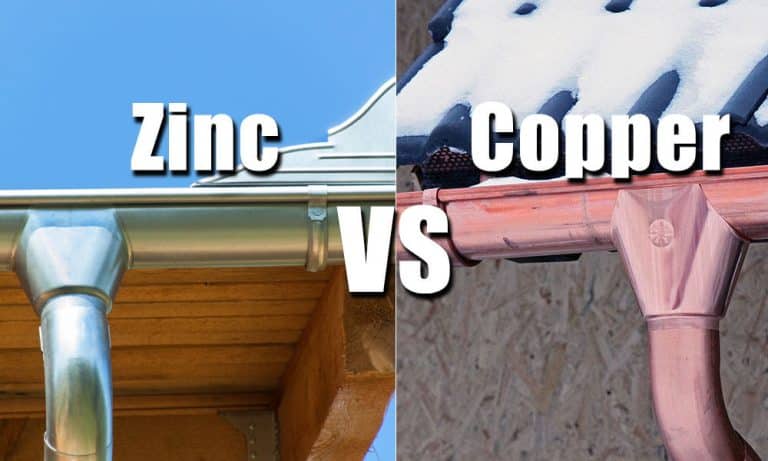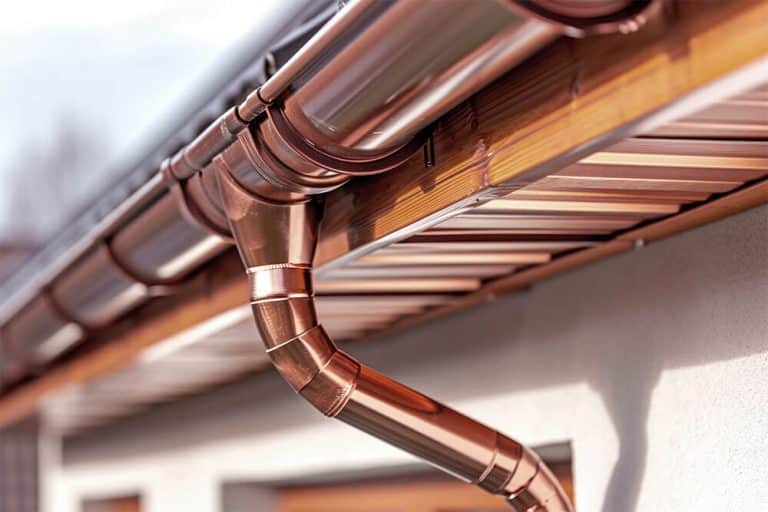Why Copper Gutters Withstand the Test of Time
If you’ve ever admired the soft green glow of an old dome or the rich bronze tone of a historic Bay Area home, you’ve seen copper’s story written across time. Unlike most materials that fade or rust, how copper gutters age and only grow more beautiful over time is one of their greatest attributes.
That transformation is called patina, and it’s one of the reasons copper remains a favorite among architects, contractors, and homeowners alike. In coastal California’s blend of sun, fog, and salty air, for example, every home develops its own unique finish as copper slowly changes color over time.
Homeowners often ask: “Is my copper changing color because it’s wearing out?” Not at all. Patina forms a tough protective layer that helps copper gutters last for decades, often outliving the roof itself.
In this guide, we’ll explore how copper gutters age, why patina forms, and what to expect from your copper gutters as they age gracefully in California’s climate.
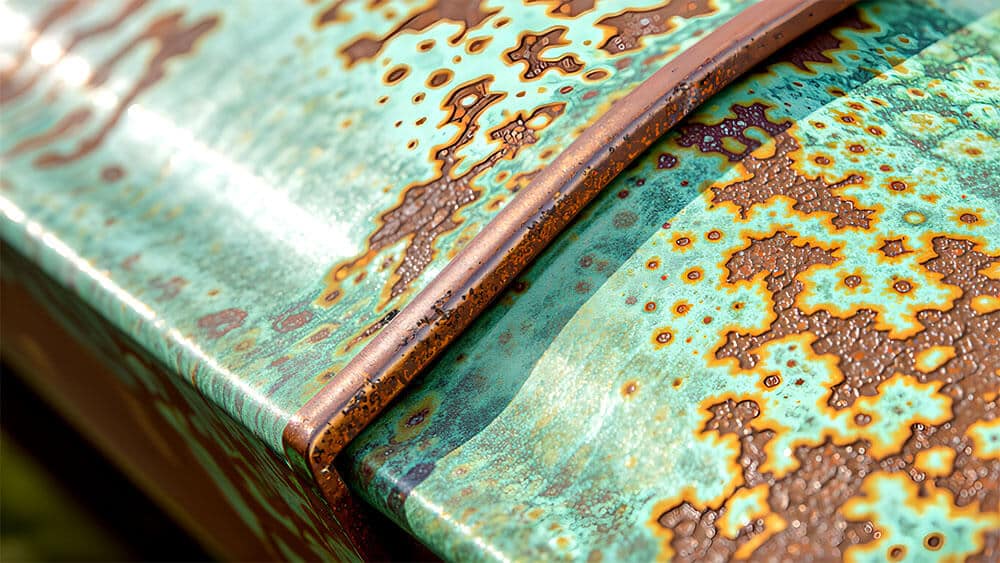
What Is Patina — and Why Does It Form on Copper Gutters?
Copper is what builders call a “living” metal — meaning it continuously interacts with the environment around it. From the moment your gutters are installed, oxygen and moisture begin working on the surface, triggering a slow process known as oxidation. Over time, this creates a thin protective layer called patina.
Patina isn’t rust, tarnish, or damage — it’s copper’s way of defending itself. Instead of breaking down, it builds up strength, forming a natural coating that protects against corrosion, salt exposure, and humidity.
The Science Behind Copper Weathering
When copper meets oxygen, water, and carbon dioxide, it begins to darken from its original orange tone to a deeper amber hue. In areas closer to the coast, trace minerals and salt particles in the air accelerate this reaction, deepening the color and helping that signature green finish emerge more quickly.
Why Patina Protects Rather Than Damages Copper
Patina acts as copper’s built-in armor. While other metals, such as bonderized steel, need sealants or paint to survive the elements, copper develops its own weatherproof barrier. This layer bonds tightly to the surface and prevents further oxidation underneath — meaning your gutters stay strong and watertight, even after decades in the elements.
The 4 Stages of Copper Aging (With Approximate Timelines)
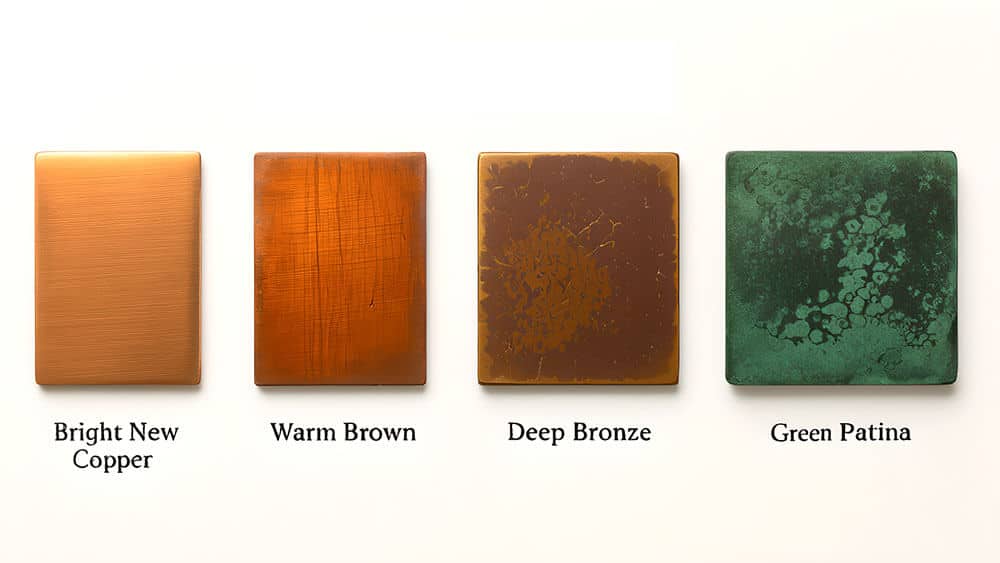
Every copper system tells its own story, but the general aging process follows a predictable path:
Stage 1 — Bright, Shiny Copper (New Installation)
Right after installation, copper shines with a golden-orange glow — clean, polished, and reflective. This stage typically lasts a few months before the first hints of oxidation appear.
Stage 2 — Warm Honey-Brown Finish (First 6–12 Months)
As oxygen begins to react with the surface, that bright shine softens into a warm caramel tone. Homeowners often love this phase because it feels rich and handcrafted.
Stage 3 — Deep Bronze or Espresso Hue (1–3 Years)
Over time, the surface continues to darken into deeper brown or even espresso-like shades. In drier inland regions like San Jose or Walnut Creek, copper may stay in this phase for several years before moving toward green.
Stage 4 — Iconic Green Patina (3–15+ Years, Depending on Conditions)
Eventually, moisture, salt, and carbon compounds work together to form the unmistakable blue-green patina seen on landmarks and historic buildings. Along the coast, this may appear within 5–7 years. Inland, it can take a decade or longer — but the end result is always striking, elegant, and unique to each home.
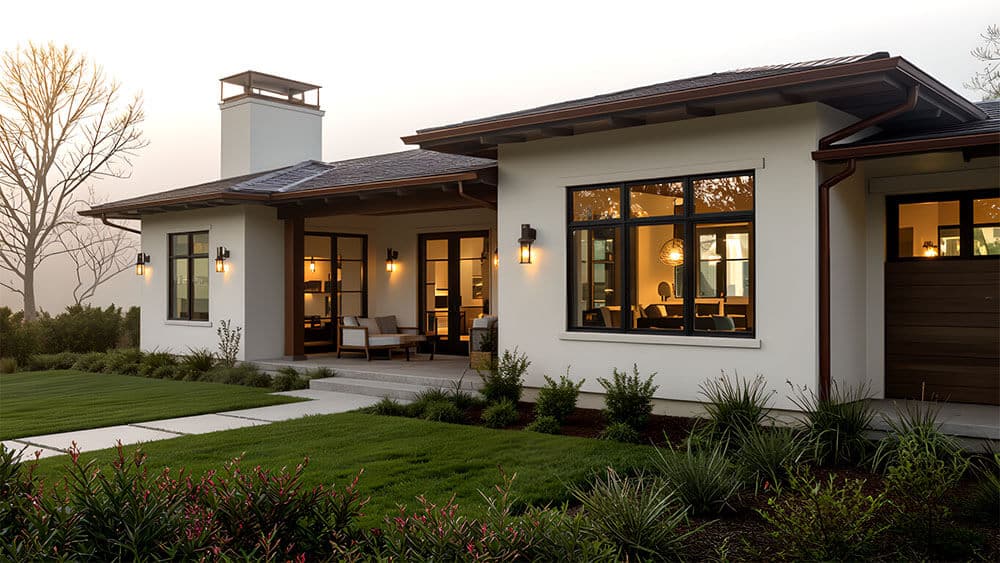
Coastal Weather Affects How Copper Gutters Age
The Bay Area’s diverse microclimates mean that no two copper systems age exactly the same way. From foggy coastal neighborhoods to dry inland valleys, local conditions shape the patina’s pace and color.
Coastal vs. Inland Copper Gutters — What’s the Difference?
- Coastal Homes (Half Moon Bay, Pacifica, Santa Cruz): The salty air and frequent moisture accelerate patina formation. Expect to see greens and blues appear within a few short years.
- Inland Homes (San Jose, Los Gatos, Pleasanton): Drier air and less salt exposure slow the process. Patina develops gradually, often maintaining a warm bronze or brown tone for longer.
No matter the location, copper’s natural self-sealing ability means it’s perfectly suited for coastal California’s varied conditions — from fog to summer heat.
Should You Clean or Polish Aged Copper Gutters?
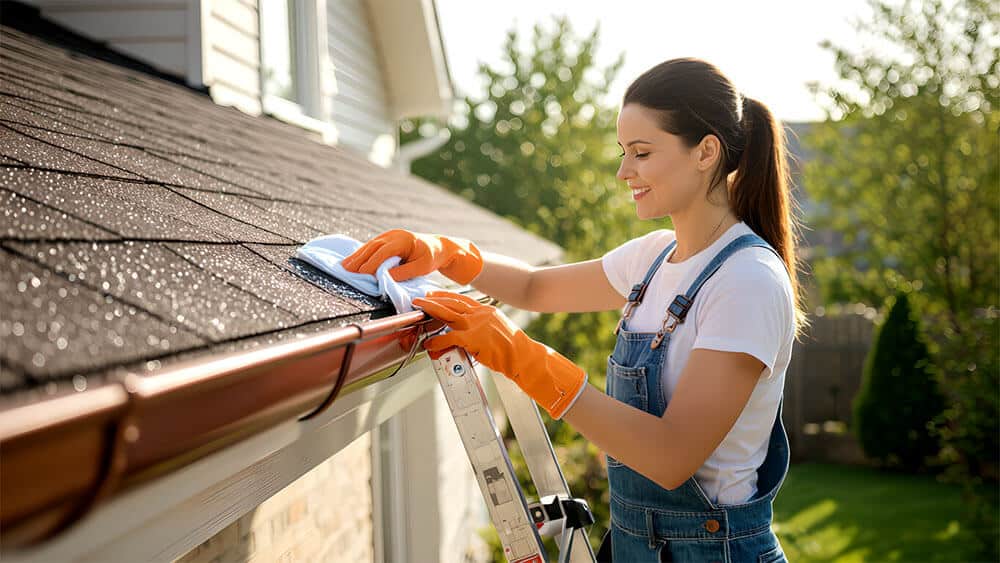
It can be tempting to polish your gutters when the color begins to change, but in most cases, the best approach is to let nature do its work.
Safe Maintenance Tips for Preserving Natural Beauty
- Skip the harsh cleaners. Abrasive pads, acids, or bleach-based solutions can damage the patina or strip protective layers.
- Use gentle rinsing instead. A soft cloth, mild soap, and water are plenty if you need to remove dirt or debris.
- Avoid sealing copper unless necessary. Sealants can prevent natural patina from forming and may create uneven color patches.
- Inspect joints and seams annually. While copper itself resists corrosion, fasteners and soldered joints should be checked for wear.
Remember, patina isn’t something to scrub away — it’s proof your copper is standing the test of time.
Real Benefits of Letting Copper Age Naturally
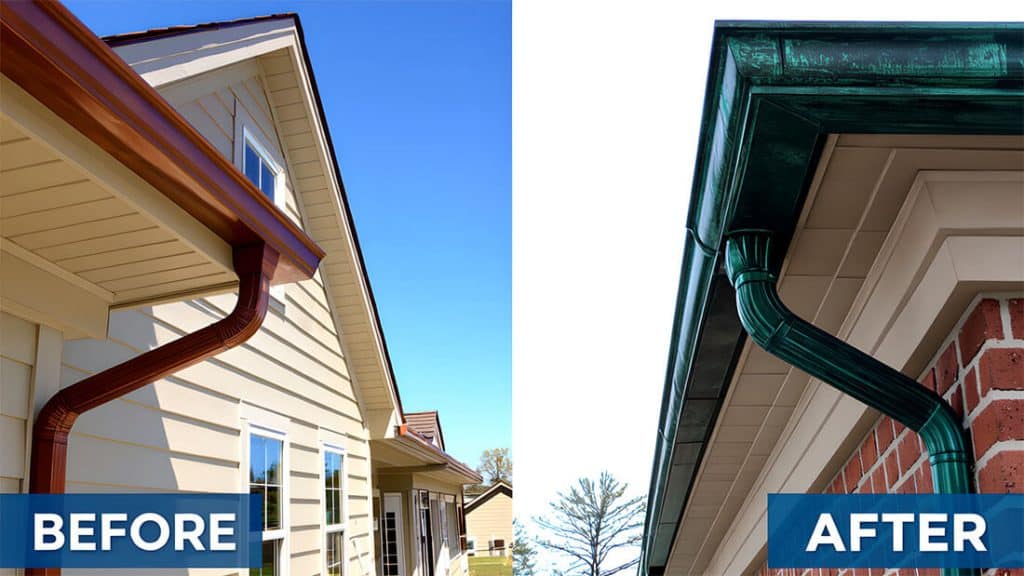
Beyond looks, patina delivers measurable advantages:
- Longer lifespan: Copper gutters can last 50–100 years with minimal maintenance.
- Protection from corrosion: The patina layer acts as a natural shield.
- Increased property value: Aged copper adds luxury appeal and signals quality craftsmanship.
- Architectural harmony: From modern minimalist homes in Silicon Valley to Spanish-style estates in Los Gatos, weathered copper complements nearly every exterior design.
When homeowners embrace the natural evolution of copper, they’re rewarded with both durability and unmatched curb appeal.
Embracing the Timeless Look of Weathered Copper
Copper gutters aren’t meant to stay shiny forever — they’re meant to tell your home’s story. Each color shift is a reflection of time, weather, and place. In coastal California, where the climate gives copper its own distinctive aging signature, that transformation becomes part of your home’s charm.
By understanding patina and how copper gutters age by letting it develop naturally, you’re not only preserving your gutters — you’re investing in an exterior that grows more beautiful every year.
So, the next time you glance up at that subtle change in color, don’t worry — your copper is simply becoming the best version of itself.
If you have questions about how copper gutters age over time, or any other questions about architectural metals, metal fabrication or copper roofing material, please contact Kobett Metals in Campbell, CA for more information.

